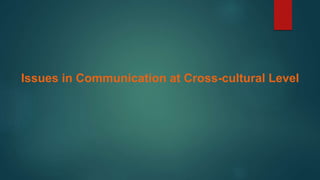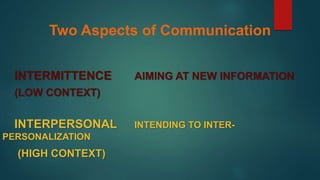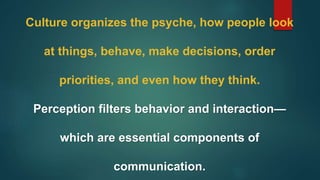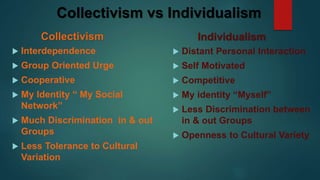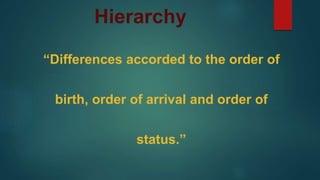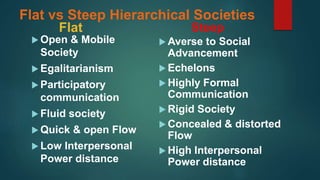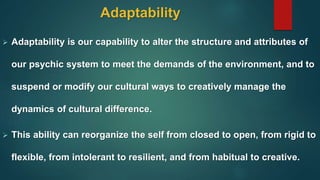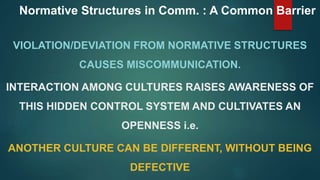This document discusses issues in cross-cultural communication and how culture impacts perception and communication. It outlines that culture governs both language/thought and behaviors/activities. Cultural differences present greater obstacles to communication than linguistic differences alone. Culture shapes perceptions in areas like individualism vs collectivism, roles, social hierarchies, values, and thought patterns. These cultural lenses can lead to misunderstandings between people from different cultures unless accounted for in cross-cultural interactions and communication. The document provides taxonomy of potential cultural barriers and differences that can obstruct cross-cultural understanding.
